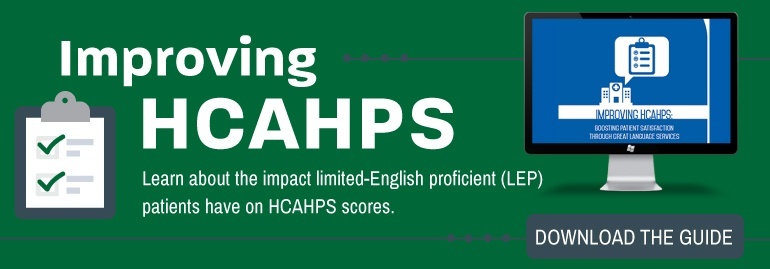.jpg?width=700&name=FemaleDoctor_HappyPatient(HighRes).jpg)
A new whitepaper published in the Harvard Business Review shines the spotlight on Patient Experience, a critical provider priority in 2019. The paper makes a number of recommendations that can apply directly to the practice of language services in hospitals and healthcare organizations:
1. Engage Patients and their Families
Patients are happier when they feel heard, understood, and respected. The faster you can provider them an interpreter to get the conversation started, and the more professional and accurate that interpreter is, the more satisfied your limited-English proficient (LEP) patients are likely to be.
For patient families, allowing them to simply be present and support their loved one (rather than have to act as a de facto interpreter) should improve their experience. Some LEP patients and their families think they want family to act as an interpreter, but they’ll likely have a bad experience (and may endanger the patient) if the situation turns out to be severe or life-threatening. Avoiding unqualified interpreters also helps your organization stay compliant with Section 1557.
2. Optimize the Diagnostic Experience
Provider/patient communication plays an outsized role in the diagnostic process. Lives have been lost in situations where providers could not properly understand the symptoms patients and their families were trying to relay.
Using professional interpreters – whether on-site or via phone or video – can bridge the communication gap between LEP patients and their providers, helping medical staff obtain complete, accurate information for a better diagnosis.
3. Deliver Outcomes that Matter to Patients
Patients care about more than just getting the problem fixed, and understanding their concerns is key to improving the patient experience. The HBR piece lists a number of outcomes that tend to matter to patients, including:
- Fewer side effects
- Fewer complications
- Shorter recovery
- Positive long-term therapy results
These factors make a big difference in determining patient experience. They’re also areas where LEP patients tend to do worse than their English-speaking counterparts. Provider/patient miscommunication tends to be a primary cause, leaving the patient confused about the steps they need to take to maximize recovery post-treatment. Here too, the use of professional interpreters can mean the difference between a patient who leaves happy and rates the hospital well, and one who readmits due to potentially avoidable complications.
4. Sustain Patient Loyalty
In 2019, it’s easier than ever for patients to spread the story of their experience at your facility – good or bad. And LEP individuals in a given area tend to form tight-knit groups within the community. If they’re treated well with the aid of professional interpreters and translators, chances are good they’ll tell family and friends, bringing more patients to you in their time of need.
Want to learn more about patient experience and how professional language services can improve LEP patient satisfaction? Download our HCAHPS whitepaper today:




